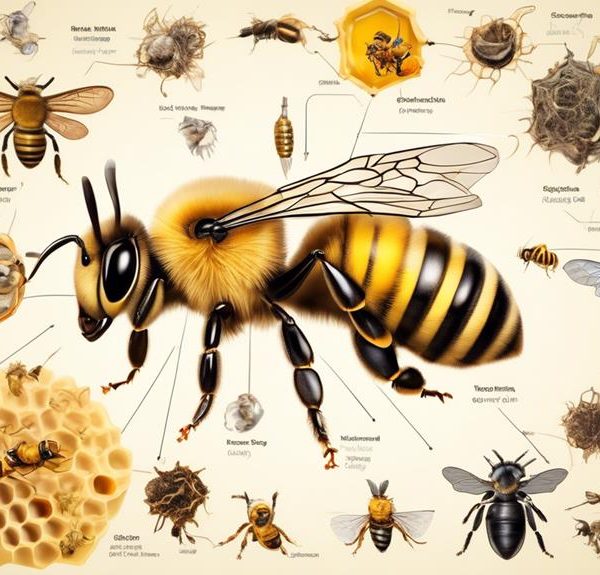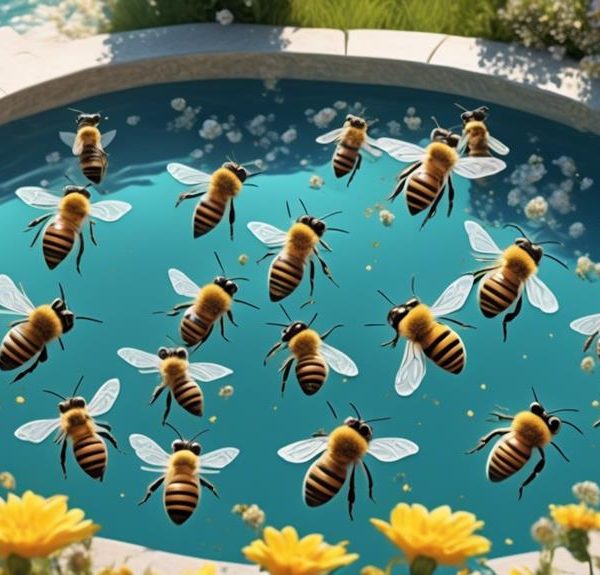Journey with us as we explore the contested relationship between honey bees and bug zappers, a debate with potentially far-reaching consequences.
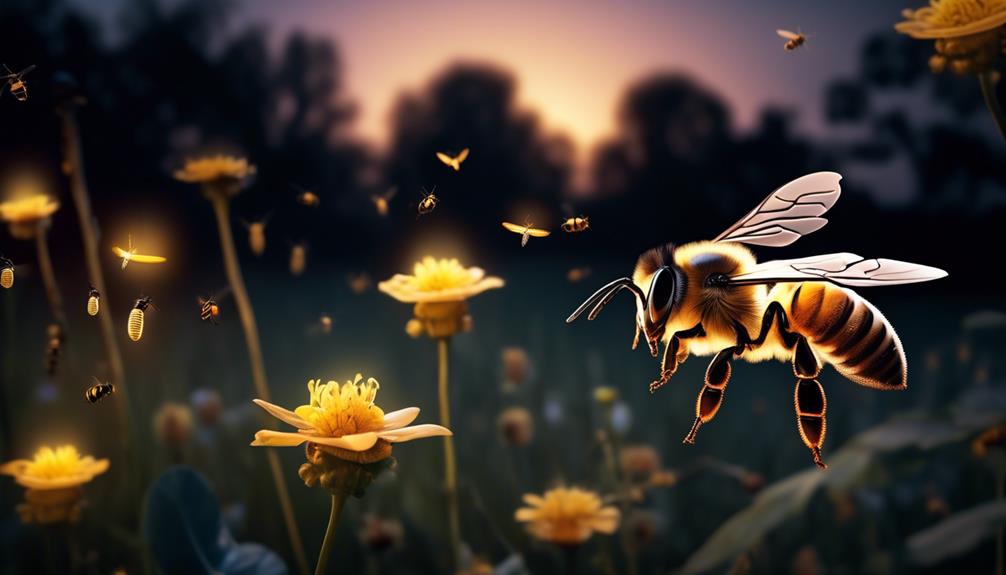
Are Honey Bees Attracted to Bug Zappers
You've probably heard the claim that honey bees are attracted to bug zappers, but is there really any truth to this theory?
Bug zappers, those electrifying devices designed to lure and kill flying insects, have become a common feature in many backyards. However, their impact on non-target species, particularly honey bees, is a topic of ongoing debate.
Now, imagine if these unassuming devices are inadvertently contributing to the decline of honey bee populations. Intriguing, isn't it?
Hold on to that thought, as we're about to explore this fascinating and consequential topic further.
Key Takeaways
- Bug zappers emit UV light that attracts insects, including honey bees due to their phototactic behavior.
- Honey bees are primarily diurnal and less attracted to light sources like bug zappers.
- Bees are guided by the sun and internal navigation system, not typically drawn to bug zappers' light.
- Bug zappers pose a significant threat to honey bee populations, which are crucial for ecosystems and crop pollination.
Understanding Bug Zappers
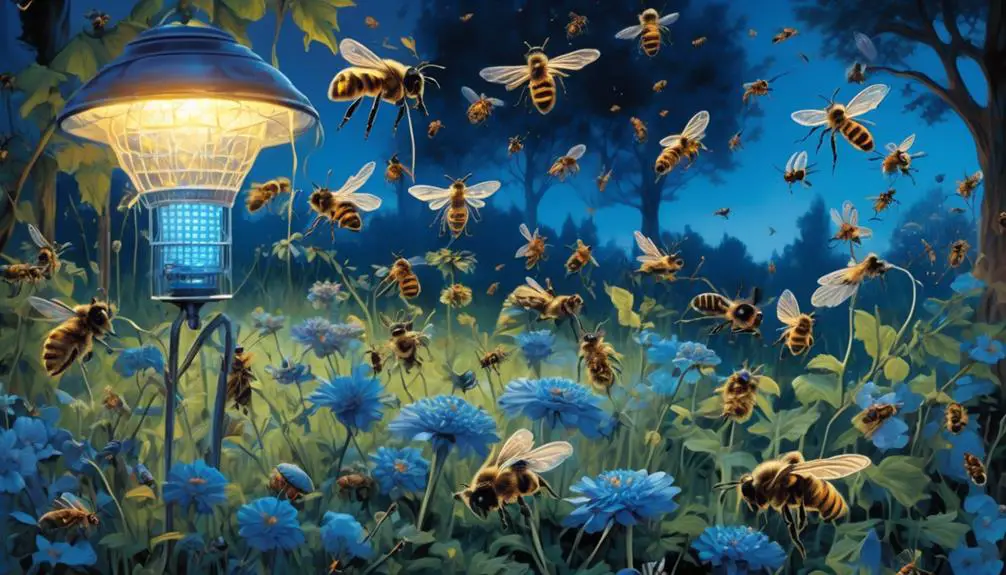
To truly grasp why honey bees may be attracted to bug zappers, you first need to understand how these devices function. Bug zappers, also known as insect electrocution traps, work by emitting ultraviolet light that attracts insects. You see, many insects, including bees, are drawn to UV light, mistaking it for the light reflected off flowers or water.
Once an insect approaches the bug zapper, it gets trapped by an electric grid that immediately electrocutes it. This lethal technique is what makes bug zappers effective against many pests. However, it's crucial to note that bug zappers aren't selective. They can't distinguish between beneficial insects, like honey bees, and harmful ones, such as mosquitoes.
Now, why would honey bees be attracted to these devices? One theory is that the UV light emitted by bug zappers may mimic the UV patterns that flowers exhibit to attract pollinators. These patterns, invisible to the human eye, are a beacon to bees. In essence, the bug zapper is exploiting the bees' natural attraction to UV light, leading them, unfortunately, to their demise. That's the grim reality of how bug zappers can potentially impact honey bees.
The Attraction of Insects to Light
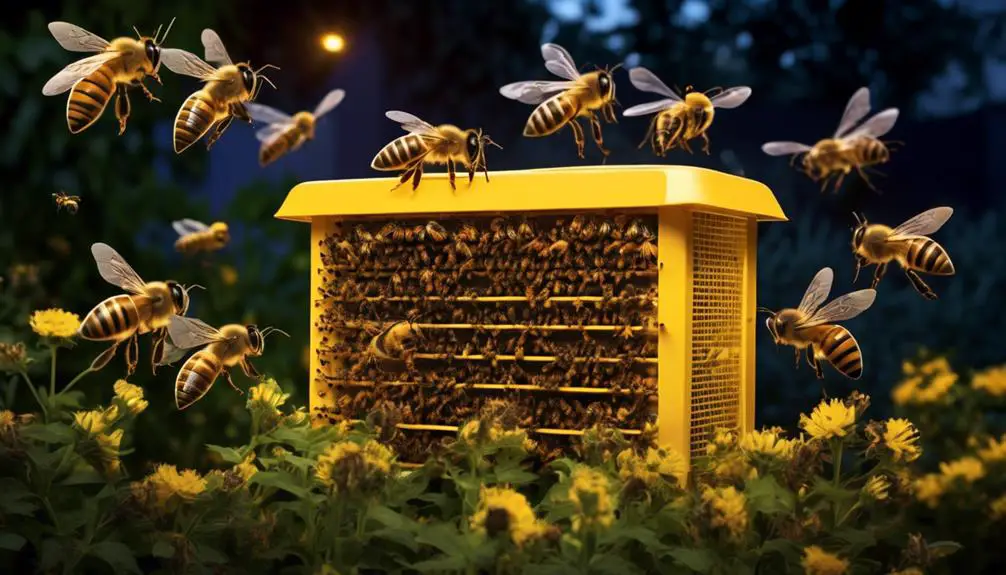
Expanding on the concept of UV attraction, let's dissect why insects, like honey bees, are irresistibly drawn to light sources, artificial or not. This phenomenon, known as phototaxis, is a behavioral response to light, which could be either positive (attraction) or negative (repulsion).
The majority of insects, honey bees included, are positively phototactic. Their complex compound eyes are incredibly sensitive to light, especially the UV spectrum. It's believed that they use UV light for navigation, particularly when foraging for food. Additionally, certain patterns on flowers are only visible under UV light, making it an essential tool for nectar collection.
Artificial lights, like those in bug zappers, often emit a significant amount of UV light, making them undeniably attractive to these insects. It's like a visual beacon that they can't ignore, compelling them towards it. However, this isn't without danger. While honey bees aren't the primary target of bug zappers, they can still be casualties, especially if the zapper is near their foraging areas.
Honey Bees and Their Behavior
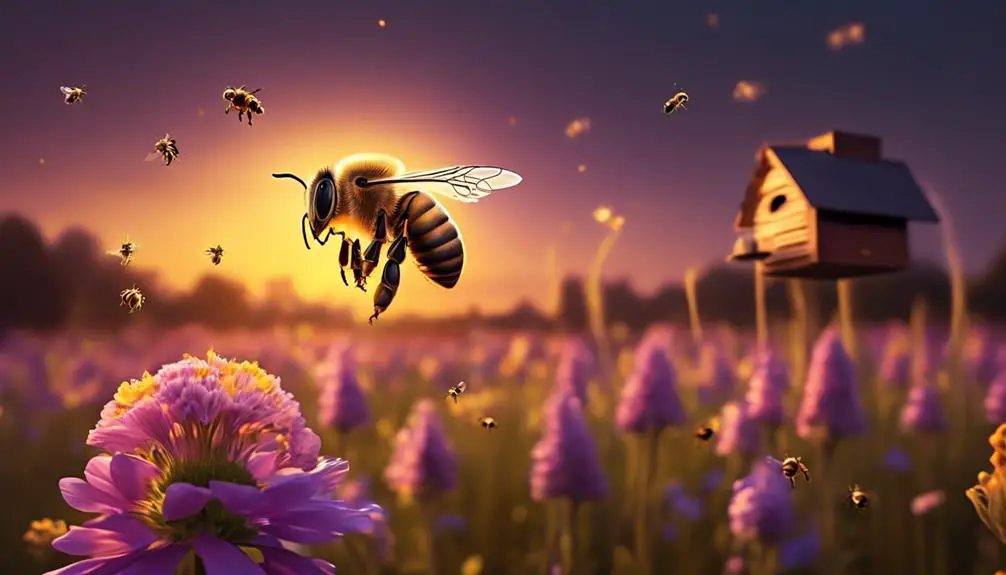
Understanding the behavior of honey bees requires delving into their daily patterns and activities, as these insects display a fascinating array of complex and highly organized behaviors. They're highly social creatures, living in colonies that can reach up to 80,000 individuals, and their entire existence revolves around cooperation and division of labor.
You'll find that their day-to-day activities are divided among three primary roles: workers, drones, and the queen. Workers, who are sterile females, perform various tasks including foraging for nectar, building and maintaining the hive, and caring for the larvae. The drones, or males, have one sole purpose: to mate with the queen. The queen's role is to lay eggs and maintain the colony's population.
Their complex communication system is another intriguing aspect of their behavior. They use a series of movements, known as 'waggle dances', to convey information about the location of food sources to their hive mates. These dances are incredibly precise and can guide bees to a food source miles away.
In understanding their behavior, you'll appreciate why honey bees mightn't be attracted to bug zappers. Their structured, purpose-driven lives may not leave room for such distractions.
Are Bees Drawn to Bug Zappers?
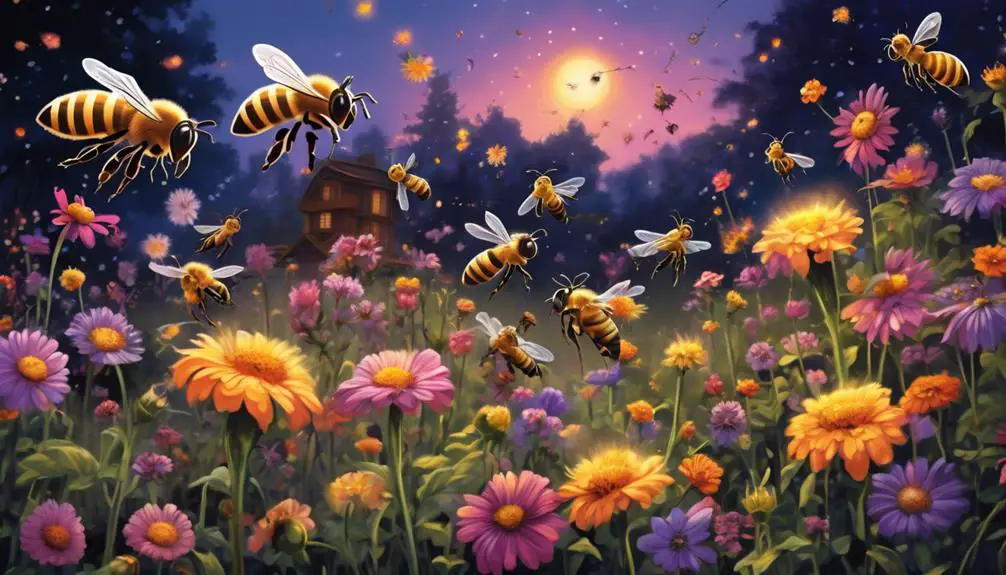
While you might assume that the bright light of a bug zapper would attract honey bees, it's important to delve into the specifics of their attraction mechanisms to truly understand their reaction. Unlike many nocturnal insects, honey bees are predominantly diurnal, and their attraction to light is far less pronounced. They're primarily guided by the sun and their sophisticated internal navigation system, rather than artificial light sources.
Additionally, bees' phototactic behavior, or response to light, is distinctly different from bugs typically zapped by these devices. They're more interested in the UV spectrum, particularly 300-400nm wavelengths, which aren't commonly emitted by bug zappers.
Moreover, the sound frequency emitted by such devices isn't within the bees' hearing range, making them less likely to be drawn towards bug zappers.
Lastly, remember that honey bees are attracted to flowers' scents, a lure that bug zappers don't have. So, while the glow of a bug zapper might seem alluring, it's unlikely to entice honey bees.
Therefore, even though bug zappers may unintentionally harm bees, they're not inherently attractive to these pollinators. You'd do well to consider alternatives that don't pose a risk to beneficial insects.
Implications for Bee Population
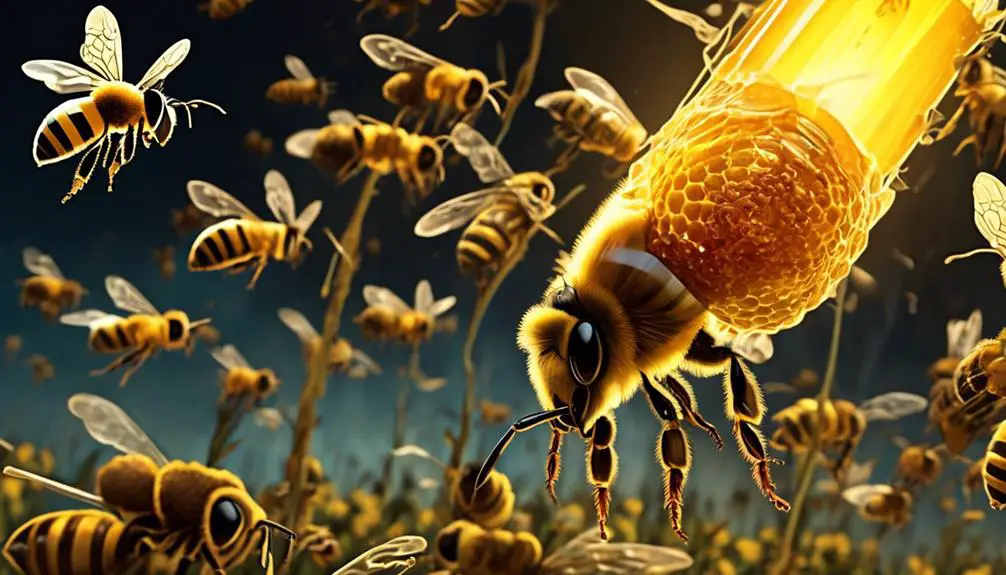
Given the potential harm bug zappers can cause to honey bees, it's crucial to consider the broader implications for the bee population. If honey bees are indeed attracted to these devices and subsequently zapped, there's a real threat of population decline. This isn't just a local issue; honey bees are integral to ecosystems worldwide, participating in pollination that affects plant biodiversity and crop yields.
This is where you come in. As a homeowner, you might think twice about using a bug zapper in your yard. While they may be effective against mosquitoes, if bees are collateral damage, you're contributing to a larger ecological problem.
In a broader perspective, declining bee populations can cause a ripple effect through ecosystems and economies. Fewer bees mean fewer plants pollinated. This can lead to decreased crop yields, which can impact food supply and prices. On a global scale, if honey bees are significantly attracted to bug zappers, we could be facing an ecological crisis.
Thus, scientific research is needed to fully understand the behavior of bees around bug zappers. Such knowledge will guide the development of less harmful pest control methods, thus helping to safeguard our vital bee populations.
Conclusion
So, you've learned that bug zappers, although effective for many pests, aren't typically a magnet for honey bees. Their behavior tends to steer them clear of these devices. The implications? Your bug zapper isn't likely contributing to bee population decline.
However, it's essential to consider other ways we might impact these vital pollinators. Your understanding of insect behavior can help in making informed decisions for maintaining a healthy, bee-friendly environment.

